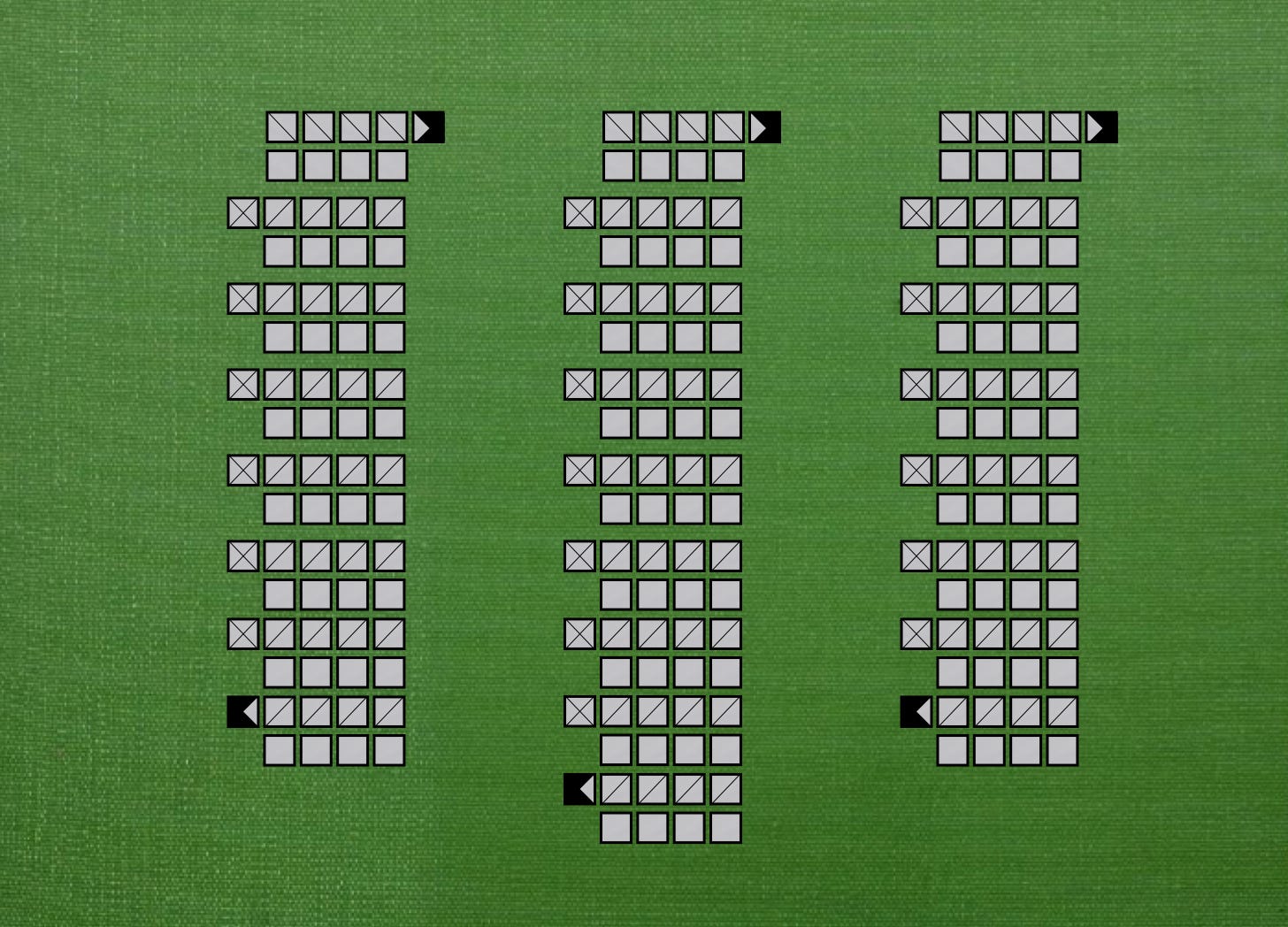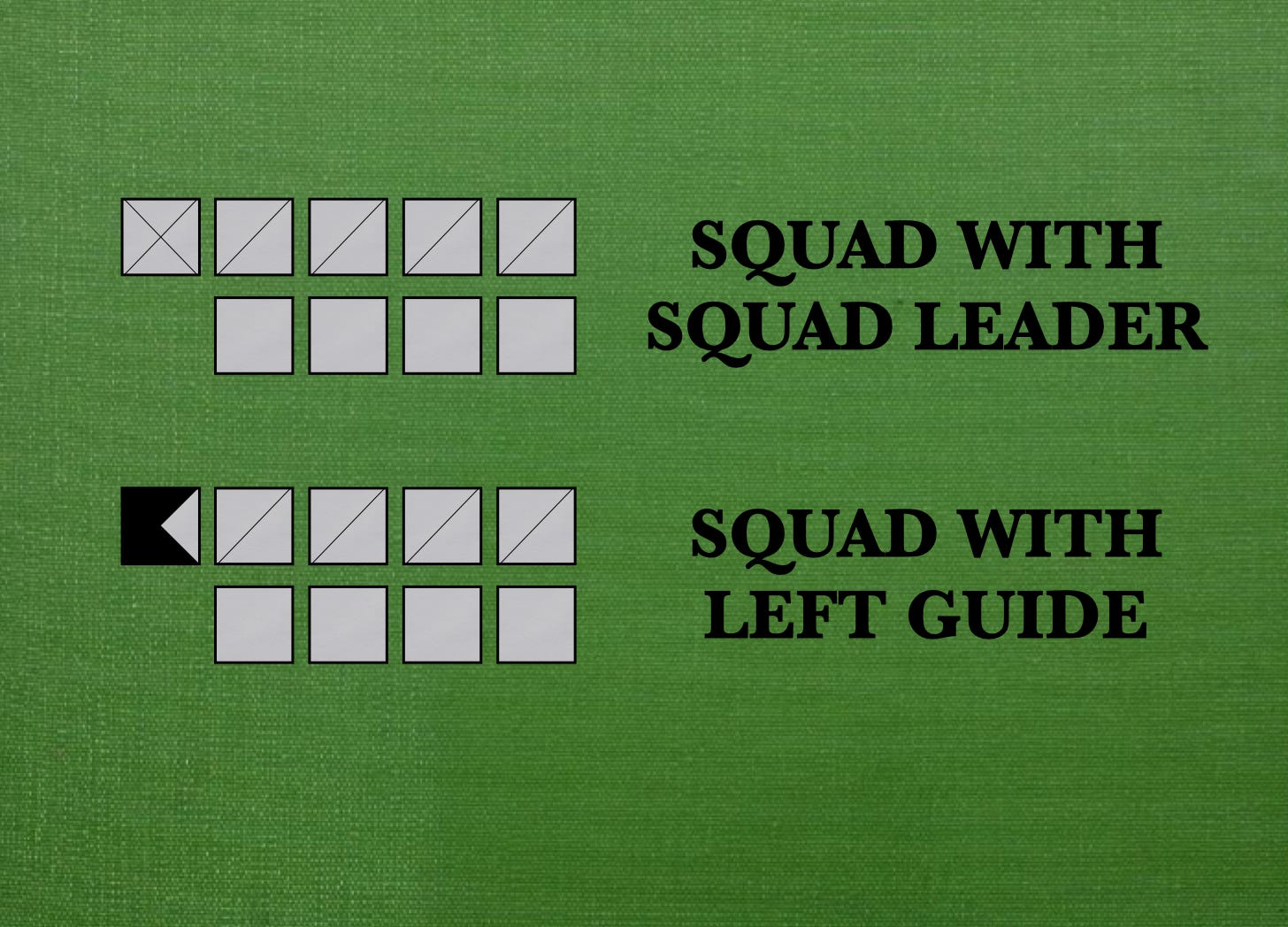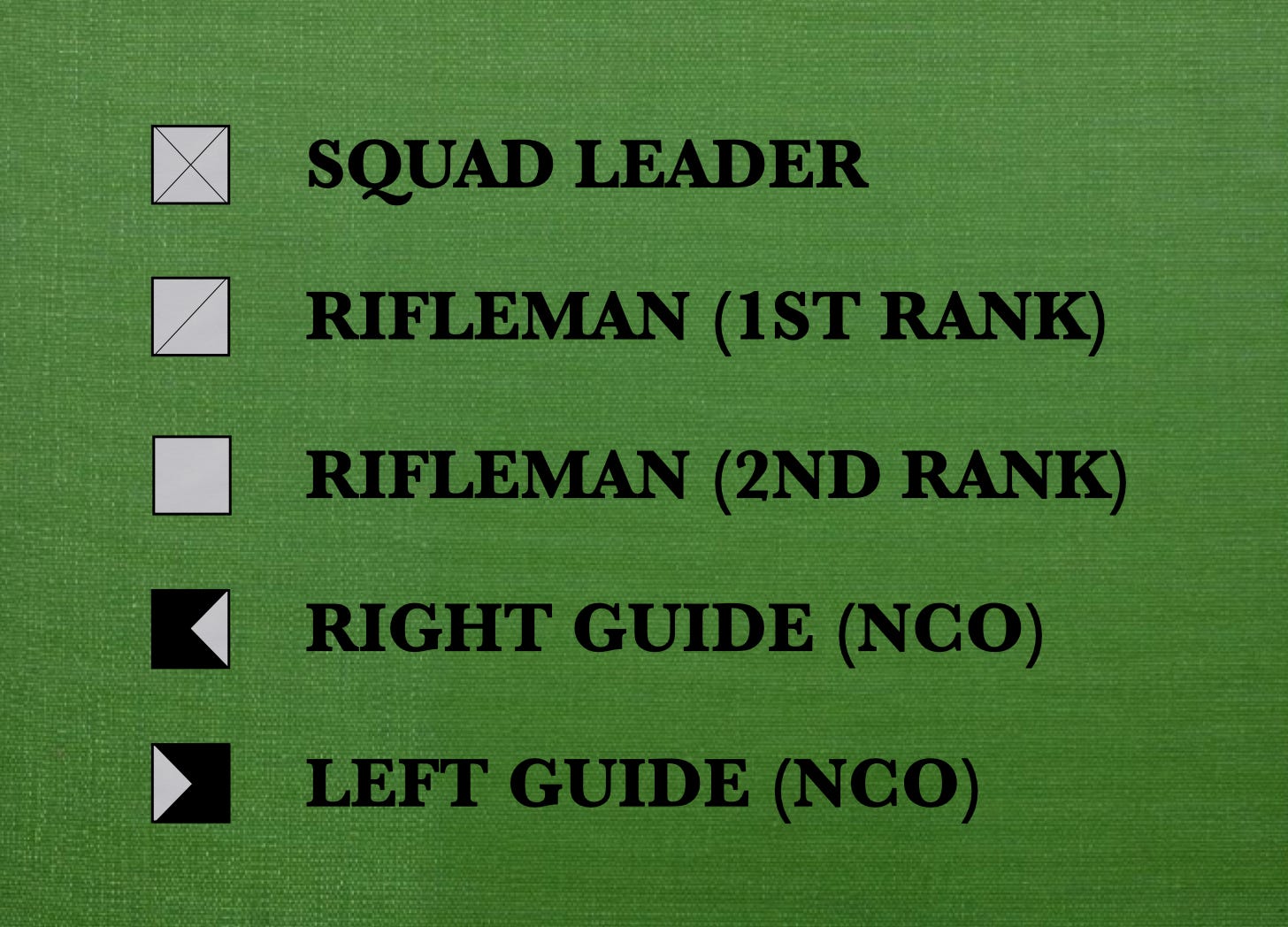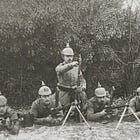Infantry Squads & Platoons
The German Armies of 1914

Thanks to the good work done by Ivor Maxse, The Tactical Notebook has been able to publish a detailed look into the inner workings of a British infantry battalion on the eve of the First World War. In much the same way, le trésor du dragon made available by Gallica - what I like to call ‘Google Books done right’ - made possible a deep dive into the internal structure of the ideal French infantry company of that era. Unfortunately, the absence of suitable sources prevents us from providing a comparable description of the building blocks of the infantry units of the German Empire.
Because of this, I am unable to offer more than the sort of informed speculation that I used to explore the structure of the Musketen battalions of the middle years of the First World War. To put things another way, while I am able to wax rhapsodic on the specifics of specialists, as well as the peculiars of the horse-drawn vehicles, assigned to the headquarters of battalions and companies, I have yet to ascertain the number of squads allowed to each platoon of a rifle company of 1914 or the rank (or ranks) normally worn by squad leaders.1 To further complicate matters, the other sources I have found disagree with each other.
In 1926, Hermann von François (who had commanded an army corps at the Battle of Tannenberg) wrote a piece for the Military Weekly [Militär Wochenblatt] In this article, he described the pre-war infantry platoon as an eighty-man unit that had been divided into ten eight-man squads. In five of these squads, General von François explained, the leader was a sergeant [Unteroffizier], in the others, the man in charge was a common soldier [Mann]. (Marvelous to say, von François made no mention of the rank of Gefreiter.]2
In 1908, William Balck illustrated his study of the formal tactics of infantry with diagrams that depicted a German rifle company arrayed in four different formations. In every one of these pictures, one platoon of the company consisted of nine eight-man squads and the other two platoons were each organized into eight eight-soldier elements of the same kind.3
The diagrams used by Lieutenant Colonel Balck bore a close resemblance to those found in the most recent edition of the Infantry Drill Regulations. Adopted in 1906, this manual also depicted companies as units that consisted of two eight-squad platoons and one nine-squad platoon.4

Apart from the aforementioned diagrams, neither Tactics nor the Infantry Drill Regulations discussed the number of squads, whether ideal, average, or minimum, in a platoon. The latter did, however, specify that, while each platoon was normally divided into two half-platoons [Halb-Züge], such splitting should not take place in platoons that consisted of fewer than four squads.
At the same time, neither Balck nor the committee that wrote the Infantry Drill Regulations made any mention of the number of squad leaders who ranked as sergeants and those who were drawn from the ranks. The Infantry Drill Regulations, did, however, describe the two guides in each platoon as non-commissioned officers.
For Further Reading:
To Share, Subscribe, or Support:
The armies of the German Empire forbade the publication of war establishments and thus, by implication, the writing of articles comparable to the one penned by Brigadier General Maxse. What is worse, the good people in charge of digital documents at the German Federal Archives have yet to make available copies of the war establishments for ordinary infantry battalions that were in effect in 1914 or 1915.
Hermann von François ‘Studies of Lessons Learned in the World War about Squad- and Platoon Combat’ [‘Studien über Gruppen- und Zugkampf nach den Erfahrungen des Weltkrieges’] Military Weekly [Militär Wochenblatt] Year [Jahrgang] 111, Nummer 7 (18 August 1926) pages 228-230
Prussia, War Ministry (Francis J. Behr, translator) Drill Regulations of the Infantry, German Army (Washington: Government Printing Office, 1907) pages 30, 31, 34, and 35
This study, called Introduction and the Formal Tactics of Infantry [Einleitung und Formale Taktik der Infanterie], formed the first of the six volumes of the fourth edition of Tactics [Taktik]. The diagrams in question can be found on pages 43, 51, 54, and 55 of the German-language original and pages 47, 57, 60, and 62 of the translation into English (by Walter Krueger).









Oh the lengths officialdom will indulge in to conceal little bits of information! Don’t they realize military historians, who are trying to make an honest living here, and their readers are trying to understand the universe of battle?
I also have to say an 80 soldier platoon must have been a monster to manage and maneuver.